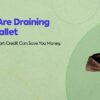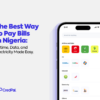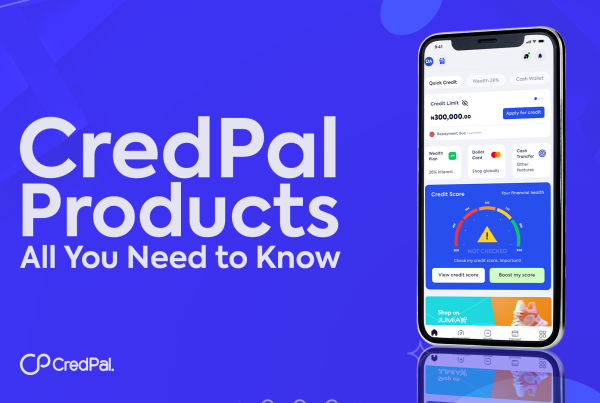The evolution of payment has transcended from simply carrying out transactions to bridging the gap between provider and user through innovative technology. The ecosystem has experienced massive growth, particularly in digital payment solutions and consumer credit. In recent years and amidst the global pandemic, there’s been more adoption than ever before just as there has been a lot of focus on embedded finance but this comes as no surprise.
Our focus has always been to play a key role in driving the retail market through embedded finance and innovative solutions like buy now, pay later that cater to businesses and consumers. We’ve been doing this for over four years and continue to evolve in building products that cater to all kinds of merchants; eCommerce, social commerce, as well as brick and mortar stores. It is what has led us to a continuously evolving product – CredPal Pay.
What we now call CredPal Pay started out as a point-of-sale financing solution for merchants. In 2018, we started out with a plugin integrated at the checkout point of eCommerce stores like Pointek, Slot, Dreamworks, and a number of other online retailers. This checkout plugin served as an embedded integration that allowed online merchants to offer their customers a flexible payment option when shopping.
And in November 2021, we redefined the point-of-sale financing solution and birthed an improved product called CredPal Pay. An omnichannel suite designed to enable merchants of any size conveniently offer buy now, pay later to their customers, receive orders via a number of channels, and most importantly increase order value and sales.
The challenges and potential
Cart abandonment
According to Baymard Institute, the average e-Commerce site has a cart abandonment rate of 69.82%. This means that for every 100 potential customers that visit a merchant’s website, 70 of them leave without making any purchase. Let’s do a quick maths to see what this means for revenue, let’s say a merchant with an eCommerce site makes a revenue of $10,000/month. Then finds a means of turning just 25% of the abandoned carts into orders, they’d make an additional $2,500/month!
Consumers’ low purchasing power
Only seven African countries on the continent have a minimum wage equal to or less than $200, while for the majority of other African countries, it’s below $100. The low economic growth and insufficient well-paying jobs have made it a challenge for a large percentage of African consumers to pay outright for small or large ticket purchases.
The average purchasing power is still very low in even the fastest-growing markets because there is just a small class of middle and high-income earners which leaves a large population still struggling with minimal spending power.
A cash-driven economy
Cash is still popular within the informal retail sector in Africa and this is because consumers still trust cash transactions first, still opting for cash-on-delivery when shopping online and paying cash in informal retail markets like roadside stores. While it’s important to note the increasing adoption of digital payment methods, there’s still a significantly large gap to fill in reducing the cash spend in Africa. As of 2021, cash was still the main payment method for online shopping in Morocco, Egypt, and Kenya.
Merchants’ in-house financing is a disadvantage
In an interview with one of CredPal’s partnered merchants, he explained how they offered to finance specific segments: customers with high Life Time Value (LTV), friends, and well-acquainted customers. His experience was that 70% of them defaulted on the payment for items they got despite the relationship and assurance of payment.
It was a business risk that didn’t pay off because the merchant was handling an in-house consumer financing that wasn’t sustainable and worse of all, tied down capital that could have been used for inventory. Other small and medium-size merchants wouldn’t even consider this option despite customers requesting it because of the high-risk and capital involved in consumer lending.
Building for merchants: a buy now, pay later solution for the retail industry
Driving a significant increase in sales
Offering payment options to potential and existing customers gives consumers the financial flexibility to manage their budgets and increase their purchasing power. What this means for merchants is higher purchase value, frequent purchases, and most importantly, an increase in sales.
Alternative payment options have been recognized as a strategy to combat cart abandonment and secure potential customers. The article by Shopify further states that one in four merchants offering buy now, pay later double their average order value because they offer customers the choice to spread their payment over monthly installments.
RBC Capital Markets 2021 outlook estimated that point of sale financing increases retail conversion rate by up to 30% and lifts the average ticket size between 30% to 50%. Furthermore, BNPL sales are expected to double between 2021 and 2026, keep in mind that as of 2019, BNPL represented 2.6% of global eCommerce sales (excluding China) estimated at $60B.
Making your business every customer’s shopping destination
Due to the global pandemic, it was important for CredPal Pay to evolve to suit the demands and changes of the retail market. With the redefined and improved product, what we’ve done is build an omnichannel suite that offers merchants a range of digital payment options to choose from when offering their customers buy now, pay later.
Over and over research has proven that retailers with more payment options have a higher chance of receiving more orders. In a survey carried out by CR Research, 60% of the respondents indicated that they have used a buy now, pay later service and 46% of those were currently making a payment through buy now, pay later.
Digital payments as a convenience
In Nigeria, wholesale and retail sales are the third-largest contributors to the country’s GDP, contributing 16% although mostly driven through informal markets. According to Statista in 2021, cash was also not very prevalent in Nigeria compared to a few of its counterparts, with 35% of eCommerce payments transacted by card, and 21% by bank transfer, it is obvious that consumers are embracing the ease that comes with digital payments and exploring more options including installment payment.
As a merchant, if you’re yet to add BNPL to your payment options, now is the time to do that.
Providing your customers the ease of paying without cash and a higher purchasing power is the extra boost your business needs to close more sales. CredPal Pay is built with no restrictions. No matter the size of the business, online or offline, there are enough payment options to use instead of sticking to just cash, POS, and bank transfers.
The value and convenience of CredPal Pay
QR Code and Payment Link
CredPal Pay makes it convenient to offer buy now, pay later from anywhere you operate.
Whether your business operates from a brick-and-mortar store, or social commerce (Instagram, Facebook, Twitter, and other social platforms). Once you register as a business, you get a dedicated dashboard that gives you access to everything you need including your payment link and QR code both of which can be shared with anyone who wants to pay you through CredPal.
But there’s more, you can track payments, and access digital assets to help you promote your business as a CredPal partnered merchant. We’re not just helping you offer your customers convenience and flexible payment options, you’ll also be handling fewer cash purchases and more contactless payments.
When using CredPal Pay, you no longer need POS machines, cash payments, or bank transfers. Everything is done via your own generated QR code and payment link.
Checkout Plugin
Revenue for the eCommerce sector in Africa is set to reach a value of over 46.1 billion U.S. dollars in 2025 and BNPL is one of the major factors that have been repeatedly highlighted as a tool for this growth. Also, research by After Pay states that customers are more likely to shop from an eCommerce store that offers BNPL as a payment option.
So, how else do you leverage this opportunity? By including flexible payment options at the point of checkout. Integrating CredPal’s plugin at the checkout point of your eCommerce store is straightforward, whether it’s WooCommerce, Magento, etc. there’s a plugin for you. Our Relationship Managers will also guide you through the integration if there are any challenges.
Building for merchants: The CredPal Pay advantage
- Increase in sales and average order value.
- Merchants bear no risk with CredPal Pay: They are paid immediately once an order has been made while CredPal takes sole responsibility for customer repayments.
- Merchants tap into thousands of new low to medium-income buyers! These buyers are used to having to save up before making major purchases. Now, they can use CredPal and instantly buy what they need.
- Simple onboarding for merchants to process customers’ orders.
How to get CredPal Pay
Registering to be a merchant partner is easy, simply click here to register and a member of the Retail Partnerships Team will reach out to you to educate and onboard you. Once this is done, the next steps will be to offer CredPal’s buy now, pay later to your customers and start making more sales!
- Visit credpal.com/business
- Tap on “Become a CredPal Merchant”
- Fill in the required details to register
- Our Relationship Managers will contact you within 24 hrs
- Get onboarded and start using CredPal Pay!
Whatever your business goals are, CredPal Pay aligns with them.









